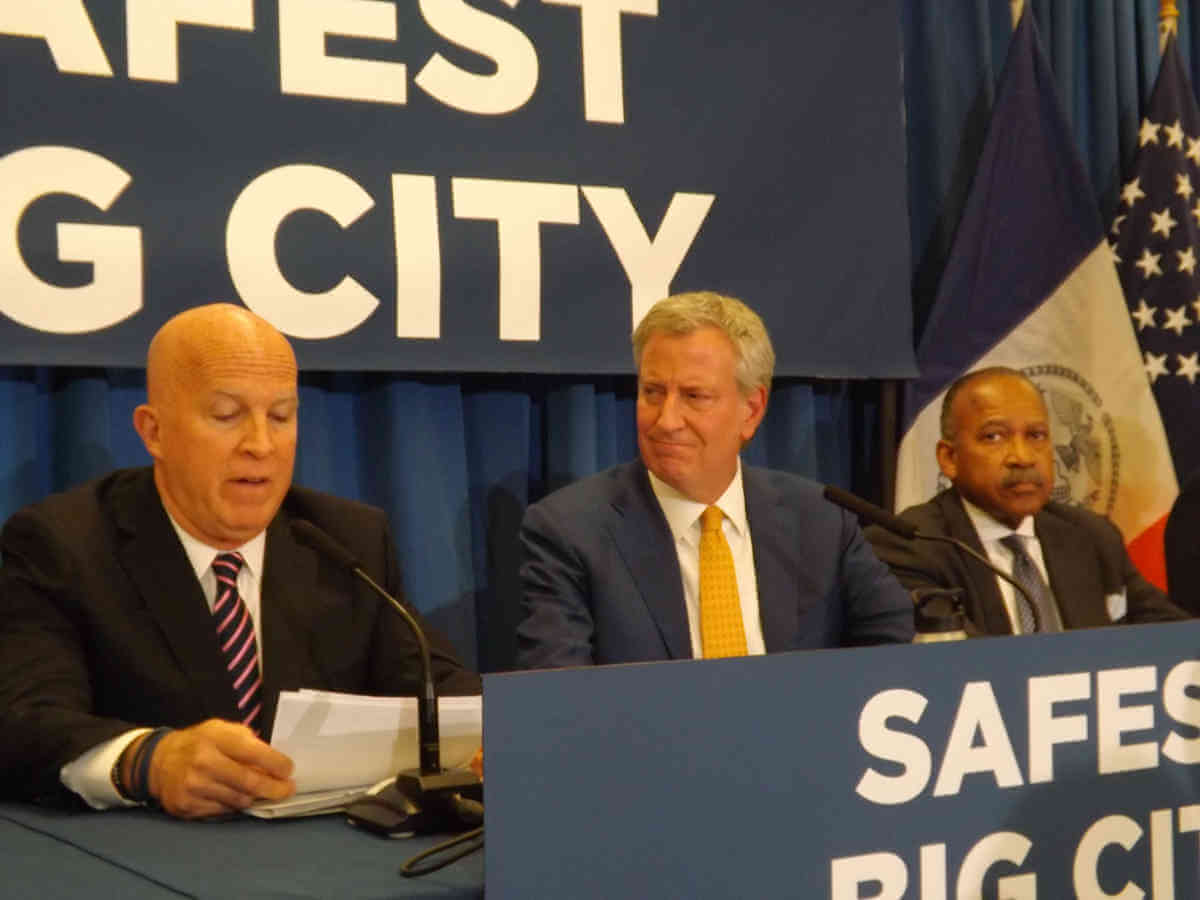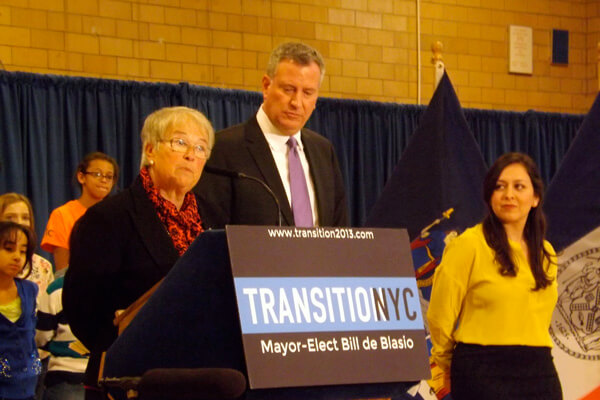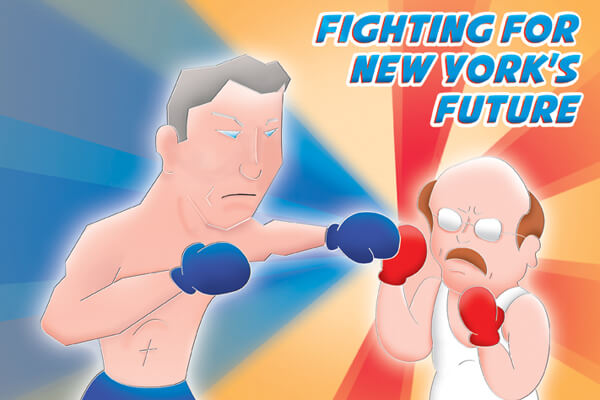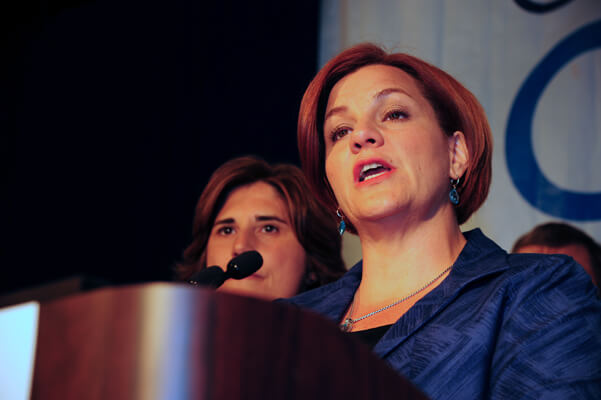The de Blasio administration did not require that the commission that recommended that Sylvia Rivera and Marsha P. Johnson be honored with a monument in the West Village consult any LGBTQ histories or historians when making its selections.
“I did not direct them specifically,” said Mayor Bill de Blasio, referring to the She Built NYC Commission, during a June 4 press conference held in Brooklyn. “The whole notion of She Built is to address this extraordinary injustice where the majority of people are not represented in the public monuments… In terms of how specific names were chosen, I was not part of that process.”
The mayor announced the 18-member commission last year. Its purpose is to promote public art or monuments that honor “women, groups of women, and events involving women that significantly impacted the history of New York City,” according to the June 2018 press release introducing the commission. The public was invited to submit nominations for art or monuments through August 1, 2018.
On May 30 of this year, the mayor, First Lady Chirlane McCray, and a host of LGBTQ community leaders and activists announced the monuments honoring Rivera and Johnson at a press conference held at the Lesbian, Gay, Bisexual & Transgender Community Center.
The commission began its work with a call for nominations from the public. It required that “Nominated events must have happened at least 20 years ago; nominated individuals must no longer be living and known for an event, movement, or action that took place at least 20 years ago.”
The commission received 326 nominations, though the 257 of the events or individuals nominated received three or fewer votes. The most nominations — 219 — went to Francesca Xavier Cabrini, or Mother Cabrini. She was a Roman Catholic nun who founded the Missionary Sisters of the Sacred Heart and established hospitals, orphanages, and other institutions. She was canonized in 1946.
The second-most nominations went to Jane Jacobs at 93 followed by Shirley Chisholm at 91. Jacobs was a noted author and leading preservationist in New York City. Chisholm was also an author and the first African-American woman who was elected to Congress. She represented a Brooklyn district from 1969 to 1983 and ran to be the Democratic nominee for president in 1972.
Chisholm will be honored with a statue in Brooklyn. The other honorees are Billie Holiday, Elizabeth Jennings Graham, Dr. Helen Rodríguez Trías, and Katherine Walker.
Johnson placed seventh with 65 nominations and Rivera had 21 nominations and ranked 19th among the nominated events and people. Ultimately, the nominations were little more than recommendations from the public and it was the commission that made the selections. Other than the requirements articulated by the commission, there was no requirement that commissioners verify that nominees participated in “an event, movement, or action that took place at least 20 years ago.”
The best evidence is that Johnson, who died in 1992, was at Stonewall on the first night of the riots there, though she told Eric Marcus, the author of “Making History: The Struggle for Gay and Lesbian Equal Rights, 1945 to 1990” and other books, that she did not arrive at the bar until after the rioting had started. It is not clear that Rivera, who died in 2002, was at Stonewall. She said she was, but gave wildly different versions of her participation in that event. She is not in David Carter’s “Stonewall: The Riots That Sparked the Gay Revolution,” the definitive account of the 1969 riots that mark the start of the modern LGBTQ rights movement, and in this week’s issue he concludes she was not. Carter also writes that evidence supports the view that Johnson was among the first people to actively resist the police on the first night of the riots.
There is no question that Rivera participated in the community’s political life following Stonewall, but she was hampered by drug and alcohol problems for much of her life and was frequently homeless. The extent of Johnson’s participation is much less clear. She also struggled with homelessness for much of her life. Together they founded the Street Transvestite Action Revolutionaries, which operated what was little more than a crash-pad for a few months.
In a May 29 interview with the New York Times, McCray charged unnamed people with whitewashing the LGBTQ community’s history.
“The LGBTQ movement was portrayed very much as a white, gay male movement,” McCray told the Times. “This monument counters that trend of whitewashing the history.”
She made similar comments at the May 30 announcement, but was more specific.
“Our history helps define our present and shape our future, but the histories written by white, straight, cisgender men rarely tell the full story,” she said.
At the mayor’s June 4 press conference, Gay City News asked de Blasio who had done this whitewashing, how it was done, and what motivated the whitewashers.
“Well, I’m not an expert on all the history, but I think we can safely say that women leaders, people of color leaders, and trans leaders have often been left out in the history and underestimated,” he said. “And we’re trying very systematically to represent everyone. So, I can’t speak to the specifics and you can certainly ask [McCray] her view. But I think as a broad statement, it’s very, very true.”




































